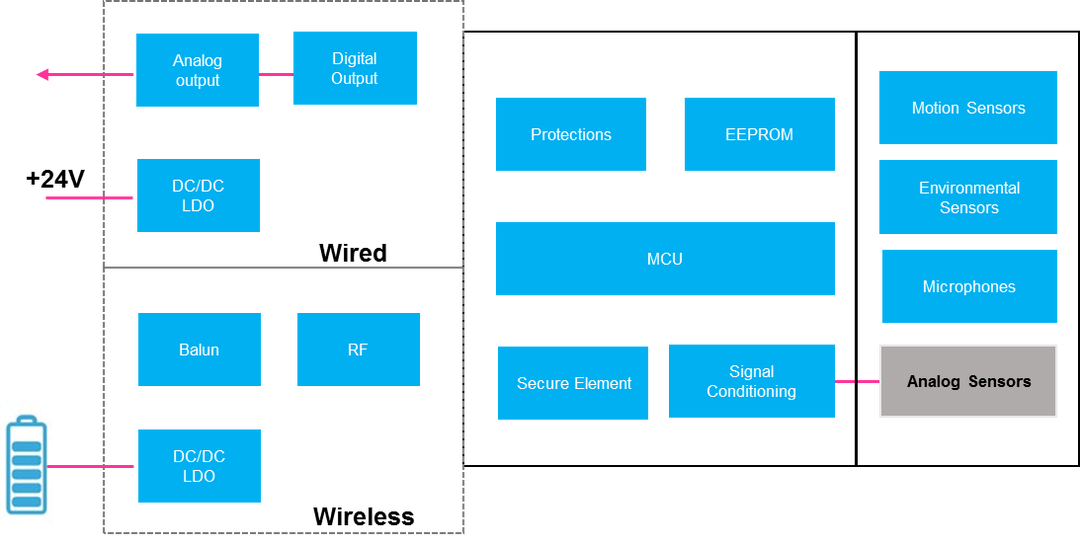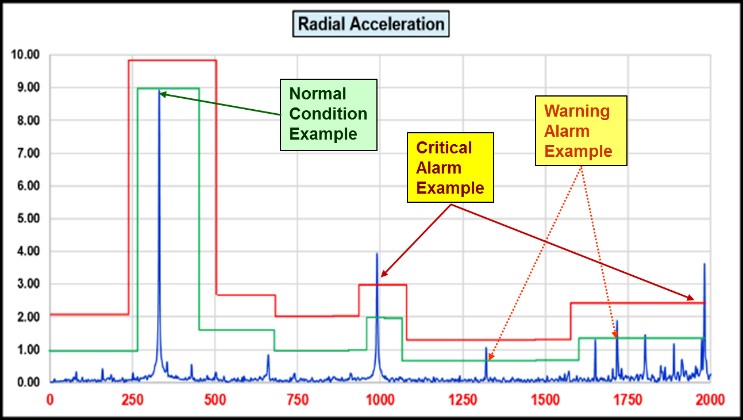Media Services
Jumping into Industry 4.0 with Predictive Maintenance Solutions
Date: 2018-11-16 16:28:56
The world of manufacturing is changing. Call it Industry 4.0, the 4th industrial revolution, or the Industrial Internet of Things (IIoT), it’s all about doing things just in time, concurrently, more efficiently, with greater flexibility, and in a safer and more environmentally friendly manner.
The introduction of new technologies and services associated with the Internet of Things is revolutionizing many industrial applications. Initiatives such as those in factories regarding automation and industrial predictive maintenance, and initiatives to build smarter working environments are creating opportunities for new entrants and traditional players to offer innovative solutions that change business models.
To ensure the high level of automation required in today’s industrial applications, equipment must be more efficient, intelligent, aware of context and more connected; it must also be more robust and ensure greater safety for the humans interacting with them.
1. What is Predictive Maintenance and what are its benefits?
Anyone running a factory wants to keep it running at optimal speed with minimal downtime. They are also aware that any machine with moving parts suffers wear and tear and inevitably requires servicing and repair.
One approach is to simply schedule maintenance tasks at fixed intervals, regardless of the actual condition of the equipment. This is simple to plan, but the maintenance may not occur in time to prevent equipment damage and dangerous situations, or it may be carried out when it is not necessary.
A smarter approach is Condition-based Maintenance. This approach drives maintenance actions based on the observed condition of the machine. Maintenance is therefore performed before failures and only when necessary. The drawback is that not implementing maintenance until a machine shows signs of failure is often risky and may interrupt production runs at highly inconvenient times.
An even better approach is Predictive Maintenance, where maintenance requirements are predicted well in advance. Predictive Maintenance combines condition monitoring with a dynamic predictive model for failure modes. This approach promises maximum protection of machinery and minimum productivity impact, without necessarily increasing overall system complexity.
According to a study by McKinsey, the use of Predictive Maintenance techniques in factories can reduce downtime by up to 50% and save between 10 to 40% on equipment maintenance costs.
Predictive Maintenance relies on condition monitoring through the measurement and analysis of physical characteristics such as sound, visual inspection, temperature or vibration.
As vibration is indeed the most common symptom of imbalance, misalignment and other anomalies, Predictive Maintenance is often based on the vibration analysis of rotating machines such as motors, pumps, spindles, conveyors, manufacturing machines and fans.
Usually, the condition of a machine deteriorates over time, which is reflected in the gradual change in measured values. Figure 1 shows how different kinds of signals reflect the deterioration of a motor over time. In principle, the earlier a defect can be detected, the lower the cost will be for maintenance and potential lost production time.

Figure 1 Deterioration curve and related signals for an electric motor. Vibration Signal Frequencies Spectrum and relative fault cause (Source STMicroelectronics)
Until recently, fault indicators like vibration and sound emissions were almost exclusively monitored with discrete portable sensor probes based on piezoelectric or ultrasound sensing principles. Not only is diagnostic equipment based on these technologies relatively complex and expensive, there are also limitations related to repeatability, data management and analysis.
A new approach is now possible thanks to state-of-the-art electronics and advanced algorithms. We can now apply small, low-power sensing devices directly on machines and monitor multiple parameters, pre-process acquired signal data, and send the data to local, remote or cloud-based analysis and control facilities. These compact smart sensor nodes consisting of sensors, a microcontroller, power management circuitry and wired or wireless connectivity offer many advantages over traditional condition monitoring equipment:
• Cost: smart sensor nodes with autonomous operation cost much less than portable piezoelectric probes and the skilled technicians required to operate them.
• Repeatable, reliable and timely data: with continuous measurement and analysis during machine operation, and not according to maintenance schedules that may miss early or critical failure signs.
• Ability to trigger immediate local action: intelligent algorithms can analyze data locally on the node and trigger immediate actions to protect the equipment and ensure worker safety
• Adjust monitoring parameters over time: The sensor node can be configured to account for increasing tolerances of aging equipmen
• In addition to the local advantages sensor nodes offer for single machines, they can also be used in cloud networks to gather large amounts of data for deeper predictive maintenance analyses.
To ensure the high level of automation required in today's industrial applications, equipment must be more efficient, intelligent, aware of context and more connected; it must also be more robust and ensure greater safety for the humans interacting with them.
2. Predictive Maintenance Architecture and Technologies
Condition Monitoring and Predictive Maintenance systems include a number of smart sensor nodes connected in a network via a gateway to an Edge server or to a cloud service as shown in Figure 2.

Figure 2 General architecture of a Predictive Maintenance system and integration with ERP (Source STMicroelectronics)
Depending on the Enterprise Resource Management architecture, data can be processed immediately on sensor nodes using embedded analytics, and on remote servers or cloud infrastructure which can process and correlate many data sets over time. Predictive Maintenance systems are usually connected to the Maintenance and Procurement component of ERP systems for timely ordering of spare parts.
In these broader systems, it is crucial to distribute analysis between the cloud, Edge servers and sensor nodes for maximum efficiency and effectiveness. The ability to detect machine deterioration at the node level allows immediate corrective action on a machine, which can prevent further damage and failure. Longer term analysis and actions can be managed on the cloud, allowing more complex analytics on large amounts of pre-processed data, which can be useful to determine trends and optimize local analysis models.
Figure 3 shows the numerous components at work in a smart sensor node.

Figure 3 Block Diagram of a Sensor Node (Wired or Wireless) for Vibration Analysis (Source STMicroelectronics)
Sensors of various types can be used, including temperature, pressure, and humidity sensors for environmental data, accelerometers for vibration measurement, current sensing devices, and microphones for ultrasound. In condition monitoring and Predictive Maintenance systems, it is essential to periodically verify proper sensor operation, and the self-test feature allows verification of the functionality of any sensor, regardless of where it is positioned, without moving it.
Accelerometers are particularly suitable for failure detection in rotating machines where acceleration, velocity and amplitude of a vibration can provide warning signs for imminent failures. Another warning parameter is ultrasound emission, which can precede vibration (see Figure 1).
Capacitive MEMS technology, widely deployed in smartphones and other consumer devices, is gaining traction in industrial applications. MEMS devices cost less and offer more flexibility, and are closing the gap with piezoelectric sensors in terms of accuracy, stability, bandwidth, temperature, and dynamic range. They are also far more resilient to high acceleration shock.
For sound emissions, analysis can be performed in both the acoustic and ultrasonic spectra (above 20 kHz), which allows very early detection of deterioration and can be used in to detect several fault causes including gas leaks and fan and motor imbalance.
Microcontrollers provide local data processing capability with data capture, processing and communication handling. Microcontrollers offer different features in term of processing power, memory and interfaces, and can be selected according to application requirements.
One of the key processing tasks of the microcontroller is to perform Embedded Analytics: usually both time domain and frequency spectrum analysis (FFT), as well as other embedded analytics.
By embedding FFT analysis near the sensor, vibration shifts can be immediately isolated to specific sources. Moreover, FFT and additional preprocessing and analytics can be developed to filter noise out of real signals and set precise alarm thresholds. An example is shown in Figure 4.

Figure 4 An example of Frequency Domain screening with programmable thresholds for alarm settings (Source STMicroelectronics)
Artificial Intelligence (AI) in the form of machine learning and deep learning is a technological breakthrough made possible by sheer quantities of available data (necessary for machine learning), modern programming techniques and open-source tools for neural-network training, powerful (cloud) computing centers and ever-improving embedded-processing systems.
Artificial Intelligence can be defined as a machine’s ability to perform logical analysis, acquire knowledge and adapt to an environment that varies over time or in a given context. This definition corresponds exactly to what we would like to do with the data captured from sensors embedded on factory machinery.
AI is a way to extract useful information and trigger actions from data. Rather than relying on specialized programmers to create detailed algorithms specifying every analytical step for a target application, AI allows machines to “learn” and develop their own way of analyzing data. The result of this “learning” can be distilled down into what is called a Neural Network.
When we look at the architecture of Predictive Maintenance systems, we can see that AI can be applied at different levels: from cloud computing centers, which process large amounts of data and develop appropriate Neural Networks, down to microcontrollers where compressed versions of these Neural Networks can be used to perform local embedded analytics. We can even deploy the Neural Networks directly in new generations of smart sensors.
Connectivity is managed through standard wired and industrial protocols (IO-Link, Industrial-Ethernet, Modbus, etc.), as well as wireless (Bluetooth Low Energy, Wi-Fi, Cellular). There is no unique solution and the choice is often driven by factory infrastructure and other circumstances.
Security in an industrial environment requires smart sensor nodes to be secure during data processing and communication to prevent unauthorized access and ensure a trusted link between the sensors to the central system. Security must be implemented across various levels from individual devices like microcontrollers to cross-system communications links.
Power Management in a battery-operated sensor is critical and power management systems must be designed to allow Condition Monitoring sensors to operate for long periods (in terms of years) without intervention.
To ensure the high level of automation required in today's industrial applications, equipment must be more efficient, intelligent, aware of context and more connected; it must also be more robust and ensure greater safety for the humans interacting with them.
3. Expediting system design and field test for Predictive Maintenance solutions
Setting up a predictive maintenance solution based on a smart sensor system may take 1 to 2 years, involving several important steps:
• Defining the system architecture
• Finding sensors with the right accuracy and stability, at the right cost and availability,
• Defining the required specification for the microcontroller including computational power, memory and interfaces
• Choosing the connectivity technologies
• Designing the power management stage and suitable form factor
• Implementing the required analytics as well as characterizing the system
• Validating everything in a real application scenario
Conclusions
Predictive Maintenance is one of the key enablers of Smart Factories and the technologies to implement make it happen are already here: sensing, connectivity, security, power management and embedded processing with Artificial Intelligence capabilities. Add cloud computing and connectivity and you have all the ingredients to create sophisticated, high performance systems that can deliver the full benefits of Predictive Maintenance applications.



